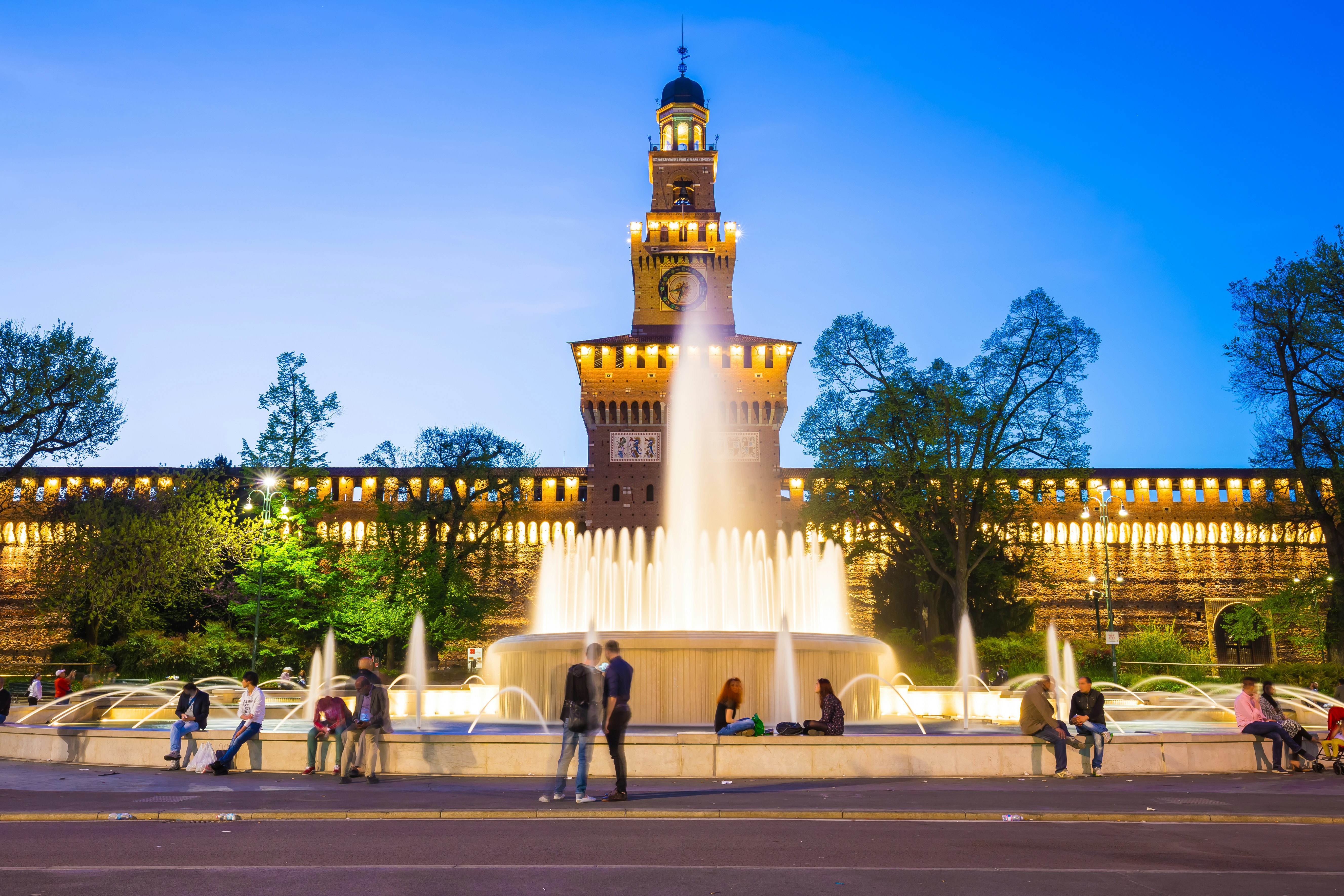

Enjoying a drink in an outdoor cafe is all part of the beauty of Milan's neighborhoods © Eugenio Marongiu / Getty Images / Image Source
Milan, the international fashion capital that’s surely Italy’s most international-feeling city, offers a collection of vastly different neighborhoods, each with its own spirit and character.
Their total number comes up at around 80, all divided into nine municipi (administrative zones). Some areas are more residential, some more historic, some perfect for shopping. Here’s your guide to a few of Milan’s can’t-miss neighborhoods.
Duomo
Best neighborhood for prime attractions
The Duomo neighborhood surrounds – as you might have guessed – the skyline-defining Milan Cathedral. The magnificent church sits right at the historical center of the city, which means its most famous landmarks are just a few meters from each other – like the gorgeous Galleria Vittorio Emanuele II or the Palazzo Reale, now a favored spot for art and photography exhibitions.
If you don’t want to spend a lot of time on public transport and prefer to have everything within a short walk, then Duomo fits the bill. But keep in mind that such proximity translates into higher prices for both restaurants and accommodations.

Brera
Best neighborhood for feeling artsy
Still central and undoubtedly chic (with prices to match), Brera immediately brings to mind the Pinacoteca – a star among Milan museums. A visit to this sprawling complex means admiring crowd-pleasing paintings like Francisco Hayez’s The Kiss, plus amenities like a botanical garden and an astronomical observatory. It’s a must-visit stop on any visit here.
The whole neighborhood of Brera has the aura of a painting from the Pinacoteca. It’s the perfect place to stroll across cobblestones, search for picturesque corners and stop for a mid-afternoon snack at one of the many literary cafes dotting the streets.

Quadrilatero and San Babila
Best neighborhood for shopping
The Quadrilatero della Moda (sometimes also known as Quadrilatero d’Oro, the “golden rectangle”) needs little introduction. Lined with the flagship stores of some of the world’s most famous high-fashion brands, the Quadrilatero has some of the best shopping in Milan – and, really, the world. If your trip to Milan will be your own personal fashion week, this is definitely the neighborhood for you.
As historic and glamorous as the Quadrilatero and adjacent Duomo, San Babila is another prime neighborhood for soaking in that quintessential Milanese feeling. All three of these iconic neighborhoods are popular, so expect to be surrounded by people almost all the time.
Navigli and Darsena
Best neighborhood for an aperitivo
The Navigli are as Milanese as it gets. Part of a system of canals created to connect the lakes Maggiore and Como with waterways in Switzerland and the rest of the Po Valley, the Naviglio Grande and the Naviglio Pavese (as well the basin they both create, the Darsena) are today hotspots for Milan social life. On the banks of these canals, you’ll join all of Milan for aperitivi and people watching. (Just remember to bring mosquito repellent if your visit happens in summer.)

Sempione and Castello
Best neighborhood for greenery
Slightly West of Brera, the area around Parco Sempione is home to Castello Sforzesco, another one of Milan’s unmissable landmarks. While only 15 minutes from Piazza del Duomo, this verdant neighborhood offers a bubble of tranquility amid the hustle and bustle of a busy city.
This area is a fabulous choice to balance easy access to important landmarks with calming greenery. Note that accommodation prices vary between the sides of the park nearer to or farther from the city center.

Porta Venezia
Best neighborhood for hip spots
Porta Venezia might have it: proximity to the historic center, quirky shops where you can shop vintage to your heart’s delight and a wide selection of cafes, bars and clubs. Add in stunning architecture and you have one of liveliest neighborhoods in the city. Porta Venezia is anything but boring.
It’s also known as the rainbow corner of Milan, and you’ll find no shortage of LGBTQ+-friendly businesses. Each June, most of the events of the Pride Week take place in and around Porta Venezia – including the Pride parade itself, which rolls out along Corso Buenos Aires.
NoLo
Best neighborhood for student life
Short for North of Loreto, NoLo is where Milanese student life blooms. A considerable number of university buildings make for an area that’s young, multicultural and exciting. You’ll find no shortage of little shops and quirky restaurants here, though the district’s creative spirit is epitomized by the street art you’ll see everywhere. Indeed, every June NoLo plays host to a festival dedicated to graffiti and street art, the Looperfest.
Relatively cheap by Milan standards, NoLo offers value in addition to variety, all just a short metro ride from the Gothic Cathedral.
You might also like:
Here's how to get around Milan – from Armani to Zanotti in style
Milan through the seasons: the best time to visit Italy’s fashion capital
The 8 best day trips from Milan
















